We all know that Japanese culture is unique but are hiking and mountain huts in Japan also so different? My one-week hike in the Northern Japanese Alps was an unforgettable experience. At the same time it was unlike my previous hikes in other parts of the world, so I decided to share what surprised me the most about hiking in Japan in this blog post.
What's in this blog post?
1. Booking mountain huts in Japan
Booking a mountain hut might be sometimes even more challenging than climbing any mountain in Japan. If you don’t speak Japanese, it won’t be easy. However, like almost everything in life is, it is doable. You just need to prepare well and I’ll tell you how.
Mountain huts websites are usually in Japanese only. However, that’s not a big problem as Google Chrome will translate them well enough. My main issue was that apart from one place that could be booked online, the rest had to be booked by phone. In fact, some could also be booked by fax. Yes, you read it right – by fax. Well, that’s Japan in 2022.
Theoretically, you can always try your luck at a mountain hut without a reservation. I believe, but I am a dreamer, that no respectable mountain hut will turn you down if you need shelter. It should be a part of mountain ethics. But… on the other hand, you never know. I am often surprised by how things work in Japan. The rules must be always followed. Besides, according to the website information bookings are required, especially in high season.
I was about to hike the Japanese Alps over a long weekend and I wanted to be safe. I needed to make those calls. It was probably the first time in my life that I could pay someone to organize my trip. But I had no choice but to call myself. My Japanese skills were extremely basic at that point of time, so I figured out what I had to say, searched for the right Japanese phrases, prayed for my luck and grabbed the phone.
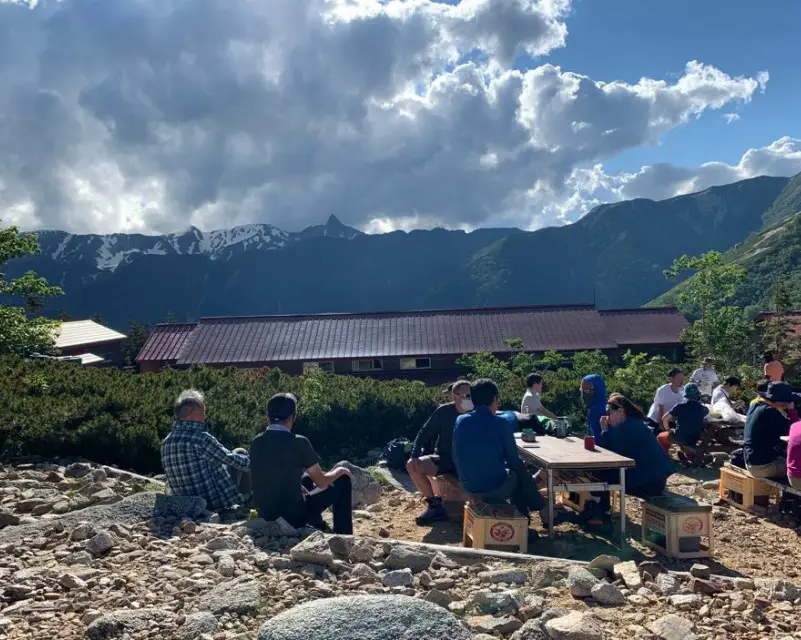
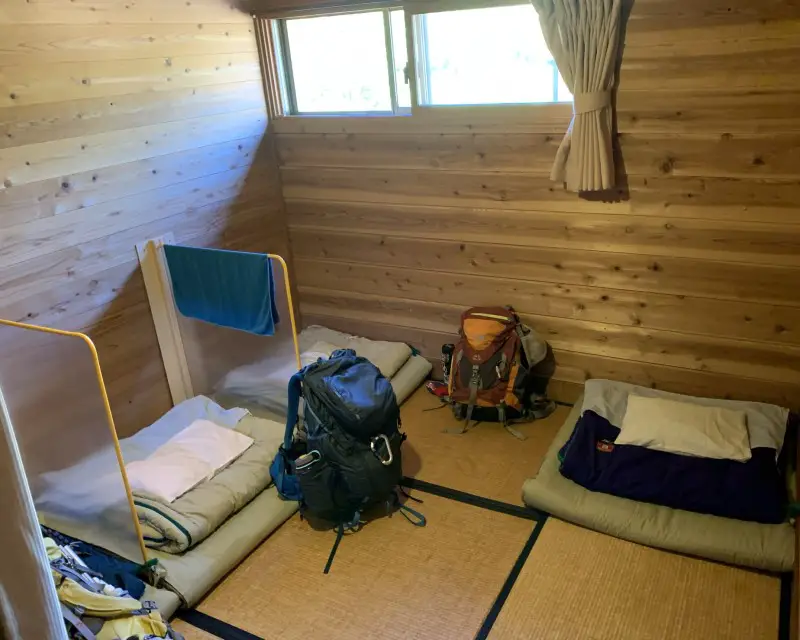
1.1. Things to know when booking a mountain hut in Japan via phone
The first question I always started with was – ‘Eigo ga hanasemaska?’, which means ‘Do you speak English?’. The answer was always hilarious. There was no answer at all. Just silence. Neither ‘yes’ nor ‘no’, not even ‘chotto’ (which means ‘little’ in Japanese). A great example of how difficult it is for a Japanese to say ‘no’ in order not to make the other person feel bad if they say so. Honestly speaking, it wasn’t a very promising beginning. However, after breaking the silence and adding ‘Nihongo ga chotto hanasemasu’ – ‘I can speak a bit Japanese’ – I could immediately hear the sigh of relief on the other side of the phone.
I called 5 different huts and all conversions were similar. Therefore, the good news is, unless you come across a very curious Japanese lady, once you survive the first call, it will only get better. From my experience, women are usually asking more questions. I really hope only men will pick up your calls. 🙂
To book a mountain hut in Japan, you should be able to say in Japanese:
- date of arrival;
- number of people and gender;
- the type of room you want to book – shared or private (on top of a normal room charge per person of ~9,000 JPY, an additional fee of 15,000 JPY will be charged for a private room);
- number of meals, which can be always changed upon your check in. The options are: accommodation only, accomodation with 1 meal (breakfast or dinner) or 2 meals;
- name, surname and your telephone number;
- route details – where are you coming from and where are you heading to.
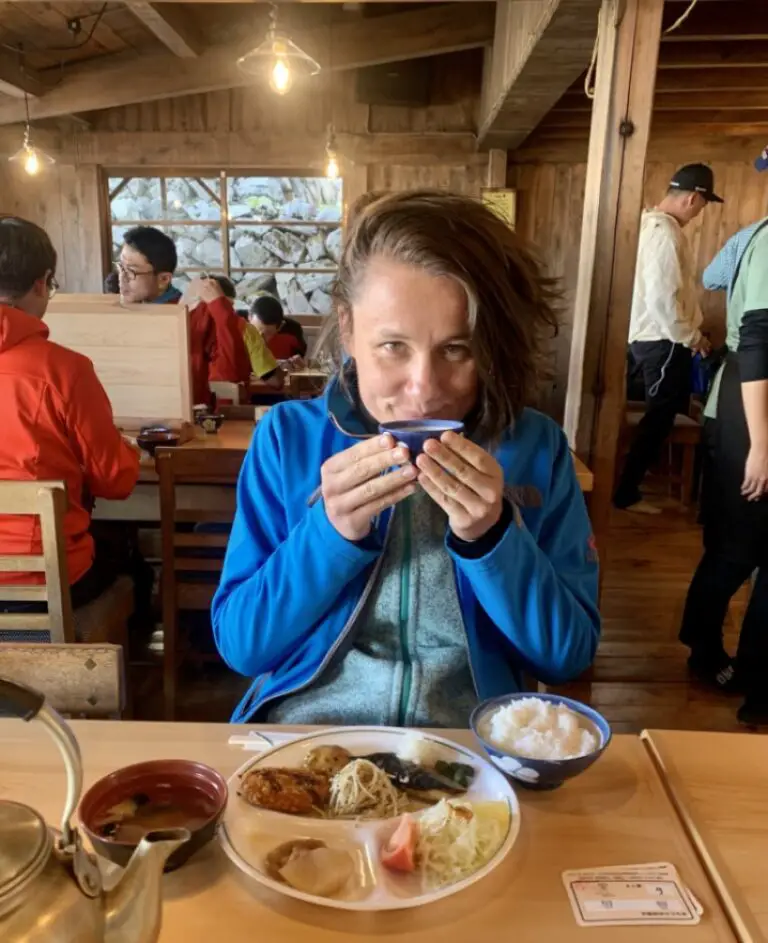
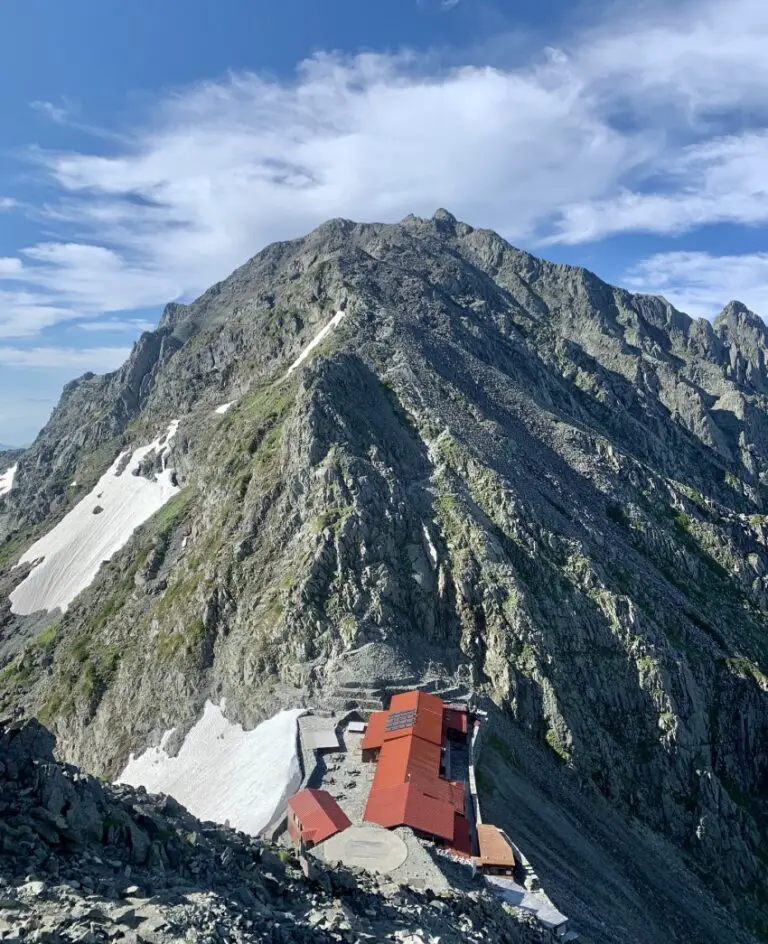
1.2. Useful Japanese phrases
- Mountain hut- Goya
- Shared room- Aibeya
- Can you speak English – Eigo ga hanasemaska? – That’s a useless phrase 🙂
- I want to book for 1 night for 2 people – Ippaku ni mei de yoyaku shitai
- I want to book for 1 night for 1 person – Ippaku ichi mei de yoyaku shitai
- Shared room please – Aibeya onegaishimasu
- I do not want a private room – Koshitsu wa hoshikunai
- 1 man and 1 female – Dansei ichi-mei to josei ichi-mei
- 1 night 2 meals please – Ippaku ni-shoku-tsuki onegaishimasu
- Your route from place X to place Y – (Place X) kara, (Place Y) made
Good luck! I am sure you can make it.
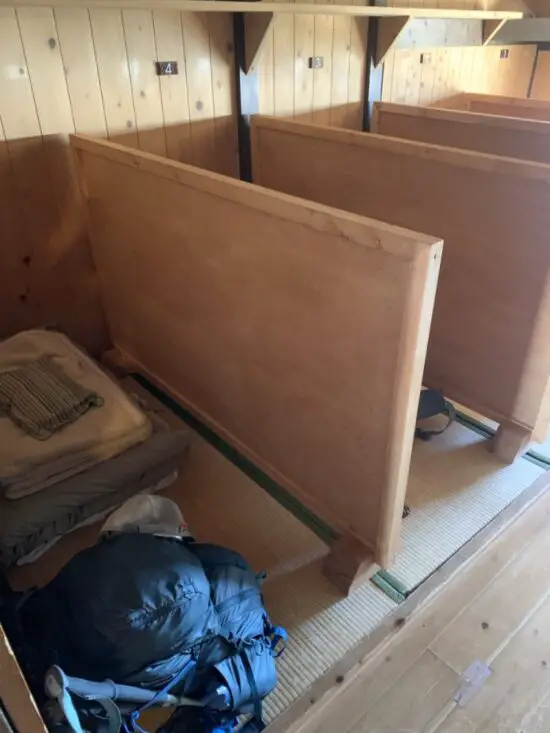
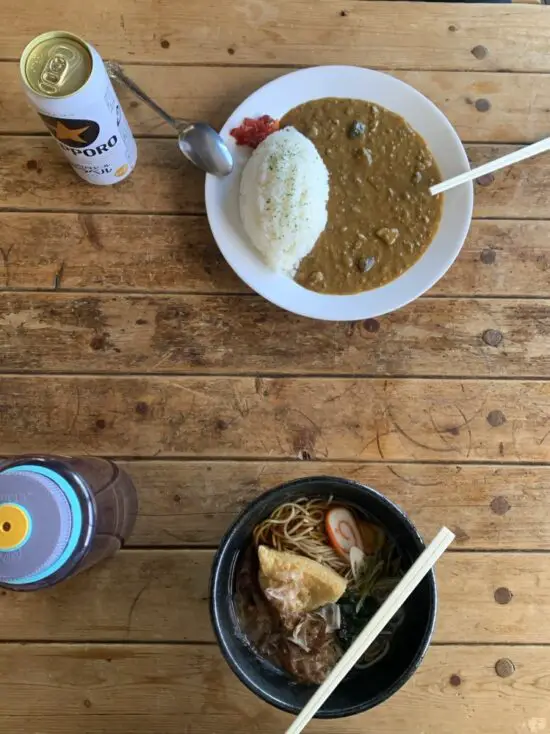
2. The day starts very early at mountain huts in Japan
In the mountains, I always get up early. One of the most important hiking safety rules is to start your day early. The weather in the mountains tends to get worse in afternoons. You certainly don’t want to walk up a steep ridge during a summer storm or walk down slippery forest trails. It turned out, however, that my “early” means “quite late” in Japan. In the Land of the Rising Sun the standards are quite different.
Hikers in Japan wake up around 4 am. Everyone gets up at the same time, so the hut gets busy at dawn. Breakfast is served around 5 am, so the mountain hut becomes quiet after 6 am. This is when the trails are already crowded, which means it is probably the best time to get out of bed, or rather off the floor. Sleeping on the tatami mat has been a centuries-old tradition in Japan and it is still alive in mountain huts. Check out time is usually at 8 am, so you have plenty of time for everything, even if you get up “late” – around 6 am.
To fully enjoy the Japanese mountains you might sometimes have to act a bit differently than the rest of the crowd. There is nothing wrong about, just remember not to break any hiking rules. In mountain huts, switching off the lights and keeping quiet after 8 pm is a normal standard. For your own safety, you should arrive early at a mountain hut not only in Japan but wherever you are. Needless to say, picking up your trash and not leaving anything behind is always a must. But as regards breakfast you might want to take a slightly different approach…
3. Fish, seaweed & miso soup at crack of dawn
Breakfast time depends on how busy and big the hut is. If the hut is reasonably empty, breakfast is likely to be served at 5 am while dinner at 5 pm. In the high season, expect a few rounds of morning meals from 5 am to 6.30 am. From what I’ve noticed, it is not possible to choose the time of breakfast. The earlier you arrive at the hut the day before, the earlier breakfast time you will be allocated. Another thing is that, to make any changes you need to be able to speak Japanese…
If you normally crave coffee in the morning and your stomach is not ready to eat fish, rice, seaweed, pickles and miso soup at dawn, don’t order breakfast at the mountain hut. Bring your own coffee and a mug, ask for hot water and buy a sweet bun, usually available at mountain huts.
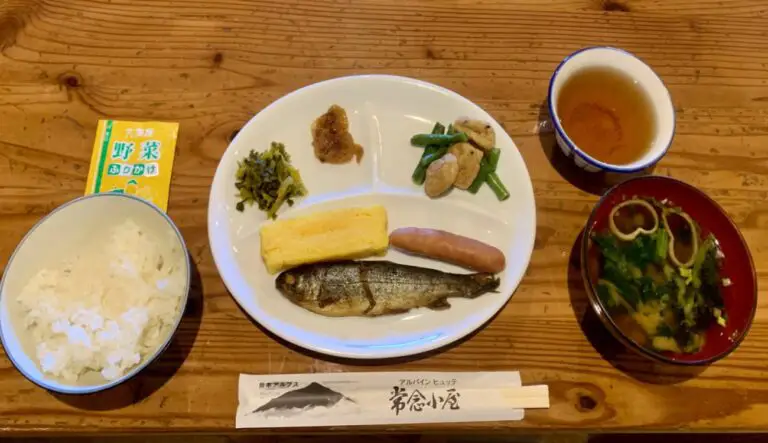
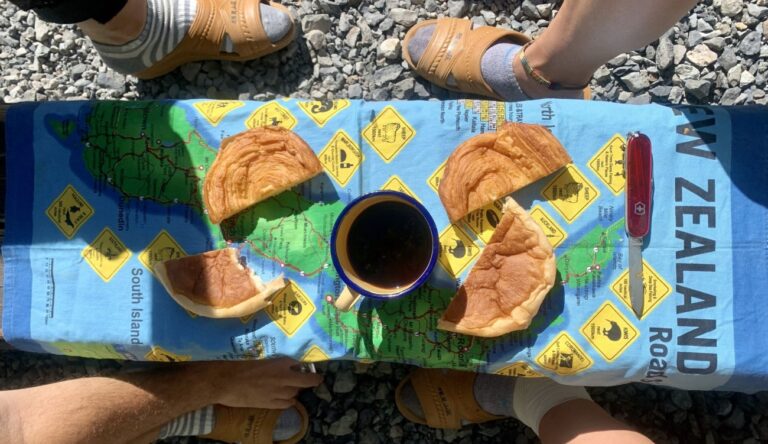
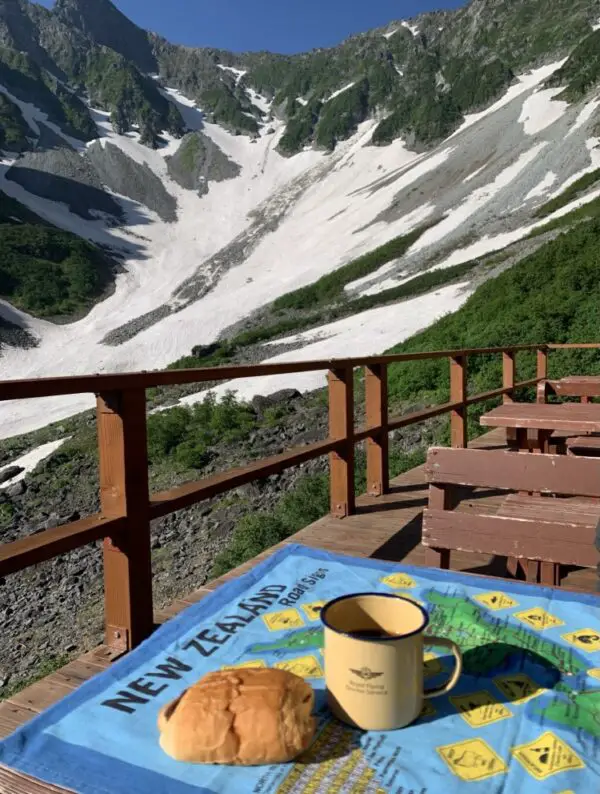
my morning strategy was a great tactical move
4. Spotless clean & quiet dormitories
The first thing I thought when booking a bed in a dorm with 20 other exhausted hikers, was snoring. And that was the first pleasant surprise as it seems that hikers in Japan don’t snore! At least not like the rest of the world can do. Aside from a few very shy snoring noises, the ones who snored the most were probably us.
The second thing I thought was the smell of sweat. After hiking for a few days without access to a shower, unless you are dressed from head to toe in merino wool clothes, you just can’t smell good. But surprisingly, there was no bad smell in mountain huts in Japan. I love that you go barefoot. In the Land of the Rising Sun, you always leave your shoes at the door before entering. This rule applies to mountain huts as well, so the smelly hiking boots are always kept at a safe distance. As always in Japan, floors are incredibly clean, and special slippers are provided in front of the toilet doors. You don’t need your own flip flops, your backpack is lighter.
Convenient and clean – perfect. Well done Japan!

5. Everyone wears very expensive mountain gear
When it comes to mountain gear in Japan, you might feel a bit like Cinderella, or at least unprepared. Hikers in Japan usually wear expensive outdoor gear and professional hiking boots, no matter how high is the mountain, or the hill. They often carry a helmet, a bear bell and wear long waterproof trousers and gaiters when it is sunny and hot outside. Is it good or bad? It really doesn’t matter. The most important thing is to feel comfortable during a mountain trek, which is very relative.
But don’t worry, you will most probably be fine with the equipment you have. Japanese mountains are not very different from other mountains you have climbed before. I suppose you climbed some before. 🙂 The mountains in Japan are not more demanding, it’s just the Japanese attitude, which is slightly different. The Japanese need to be prepared for all kinds of scenarios as a strong sense of security is essential.
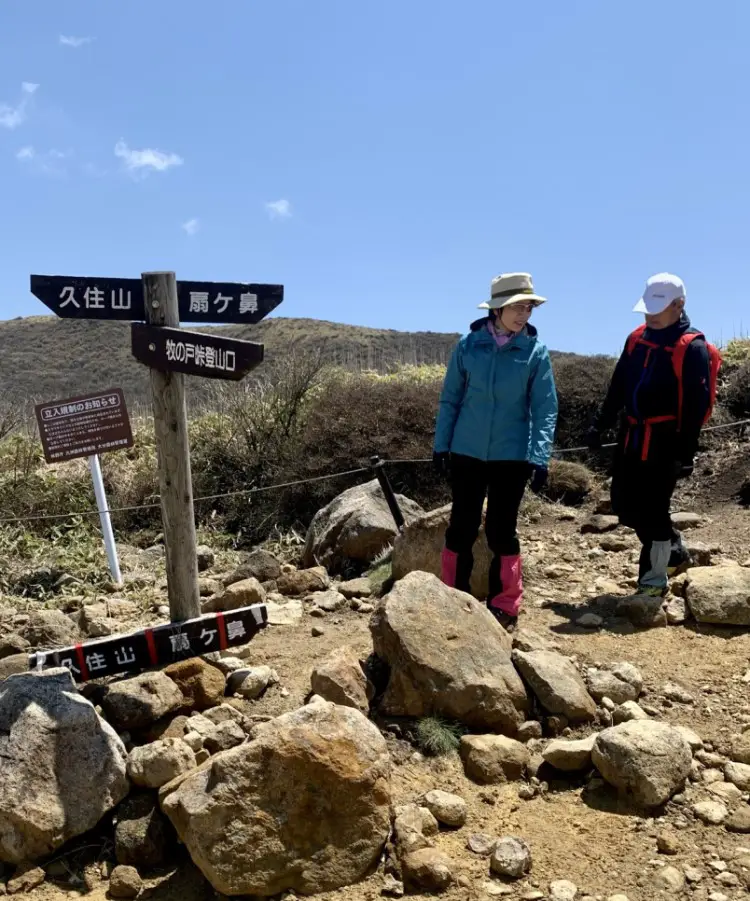
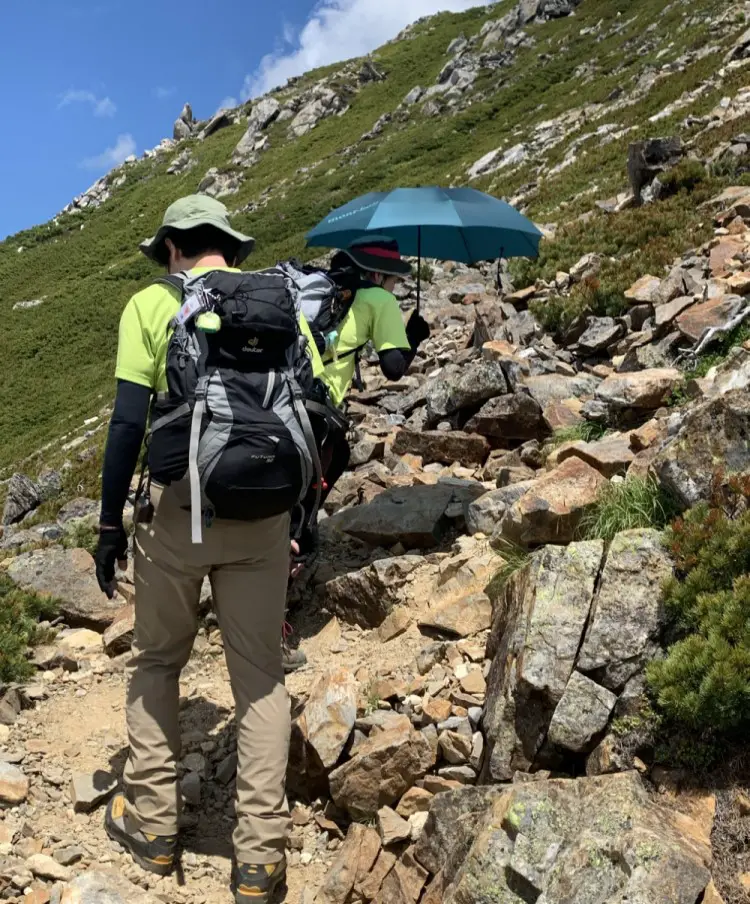
5.1. Hiking boots
I think that two of the most professional Italian brands of mountain footwear – La Sportiva and Scarpa – sell more hiking boots in Japan than in the rest of the world. Regardless of the time of the year, the weather and the altitude, the Japanese wear trekking boots from the best brands.
I do have such boots myself and I love them. I just do not use them in summer in Japan. They worked great on my treks in Nepal and on snow hikes in Japan. La Sportiva high trekking shoes are perfect for snow and low temperatures at high altitudes in the Himalayas, or during heavy snowfall in Japan. By the way, if you want to learn about my snow hikes and snowshoeing experience in Japan check out this post “PRACTICAL GUIDE TO INDEPENDENT SNOWSHOEING IN JAPAN.”
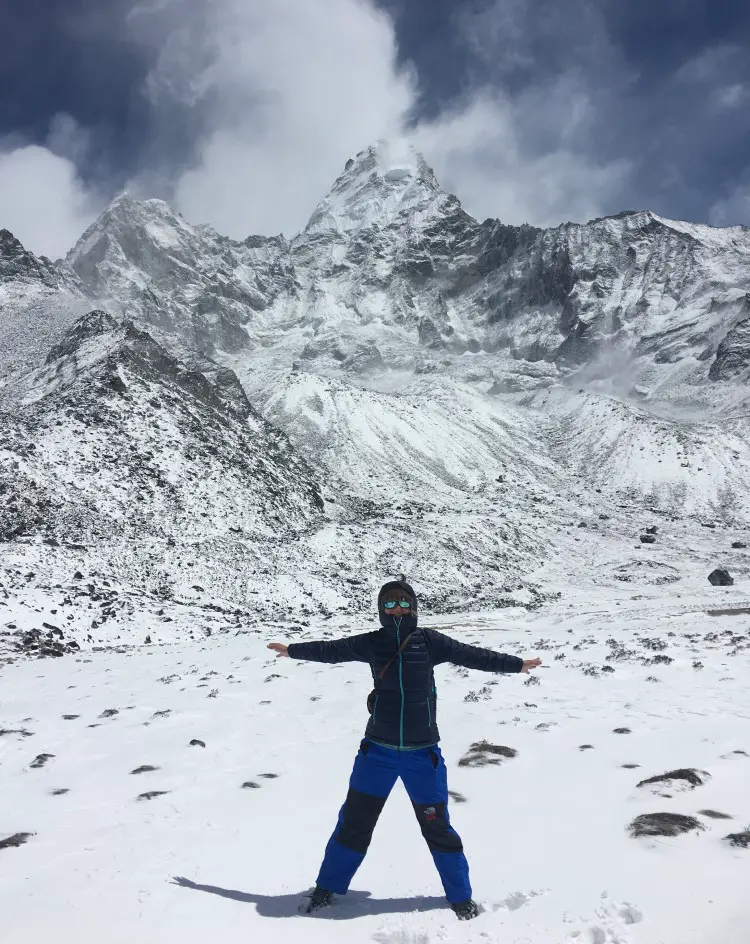
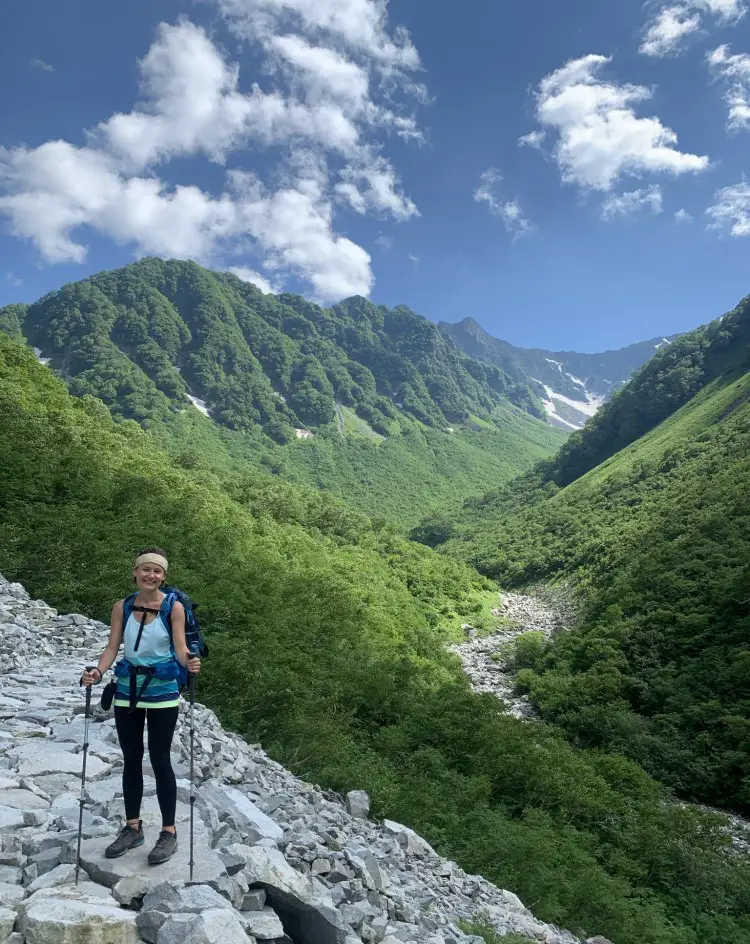
But when it’s sunny, dry and hot, they are not the best solution for the feet, unless… you are Japanese passport holders. 🙂 This of course does not mean that in summer you do not need right hiking shoes. They must be comfortable, waterproof and provide adequate protection for your feet, especially if you carry a heavy backpack. Just don’t feel out of place and unprepared if you don’t have USD 300 hiking boots while hiking in Japan. The fact that everyone around you has them, does not mean they are needed.
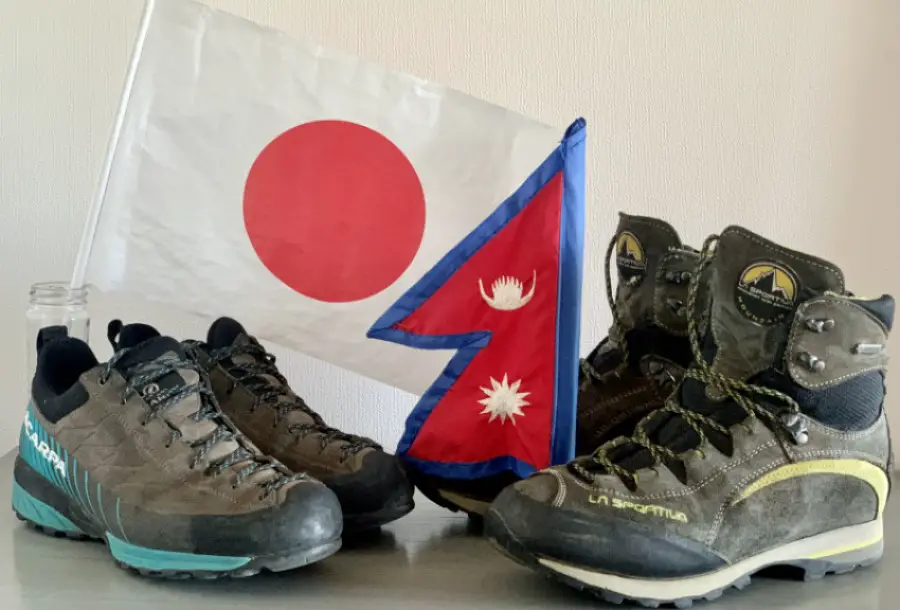
6. Mandatory bear bell just in case
Bear bells are very common in Japan. You will know from afar by their sound that a Japanese hiker is approaching. Such bells are definitely useful if there is a risk of a bear nearby and there are black bears in Japan. However, many hikers in Japan wear bells on extremely popular trails in the middle of the day, where there are so many people that I doubt any bear would want to visit. Is it good or bad? This is again not very important. When hiking, everyone should have the gear that makes them feel safe.
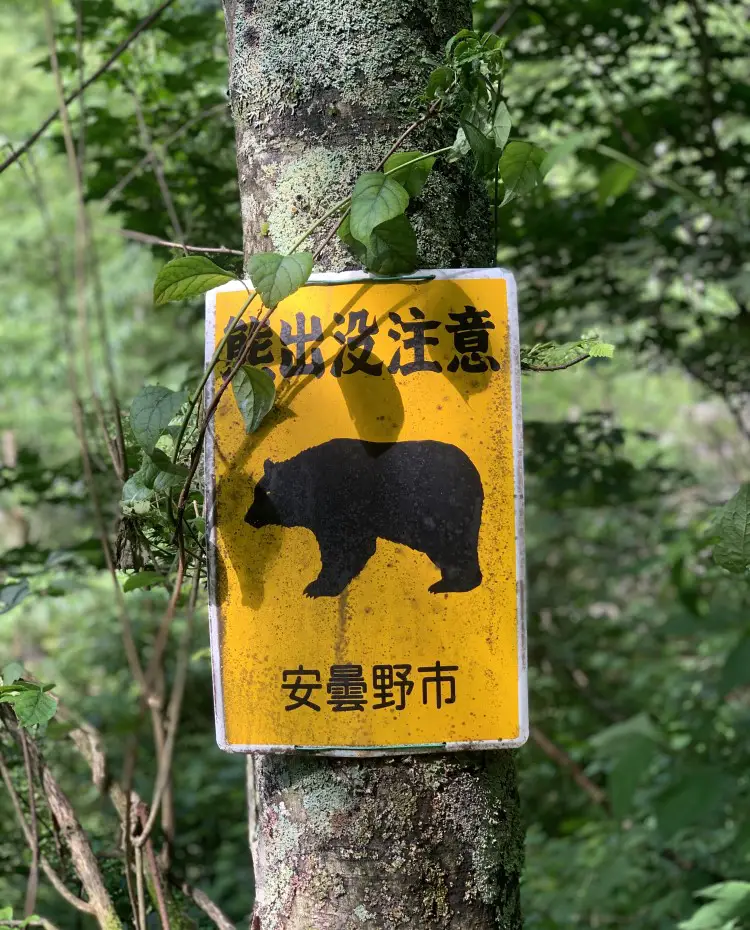
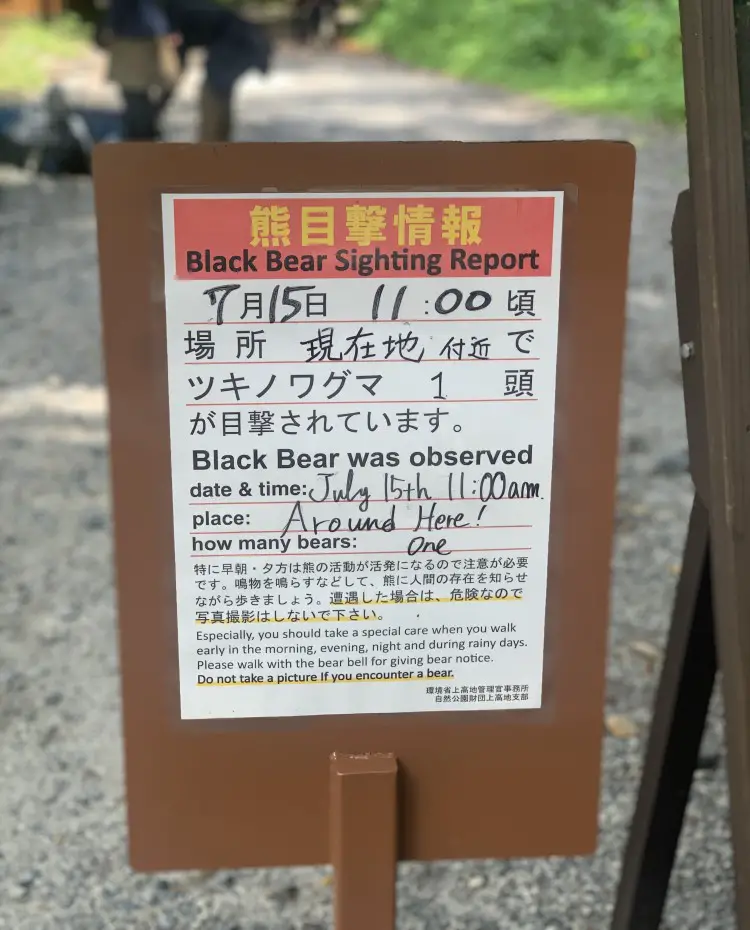
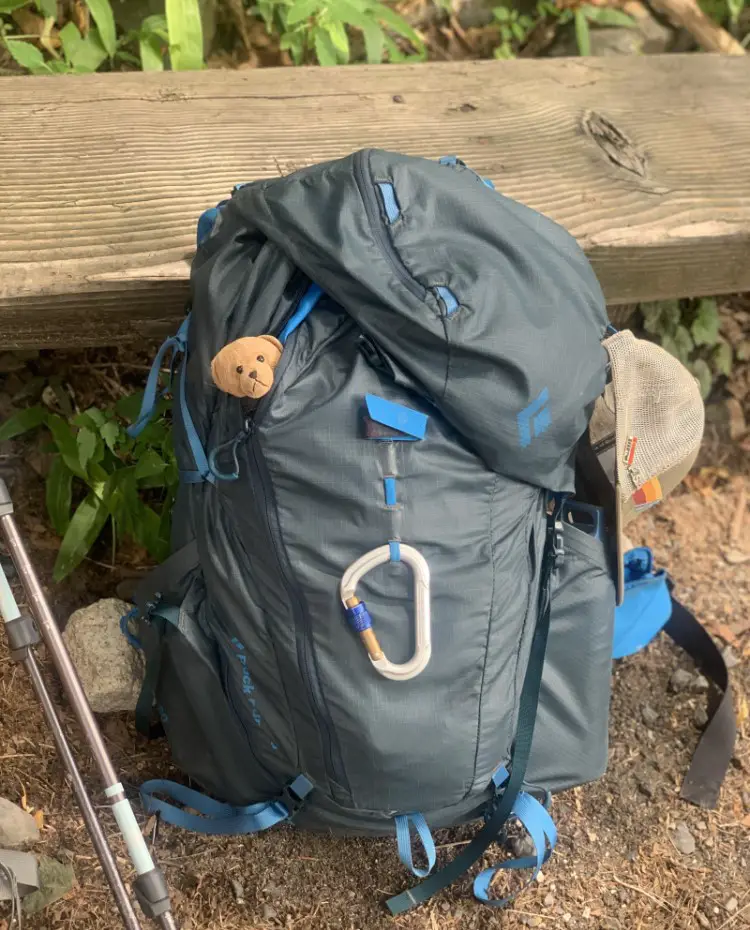
To conclude I will just add that meeting hikers with the most professional mountain equipment, including high trekking boots and of course a bear bell is very common at Mount Takao. This lovely mountain, located near Tokyo, is a very popular place to admire the Mount Fuji view. According to Wikipedia, Mount Takao, which is 599 m high, is visited by more than 2.5 million annual tourists.
7. My 3 favourite things about hiking in Japan
Here are 3 things I really love about hiking in Japan:
Toilet Paper
There is always toilet paper in restrooms in mountain huts in Japan. On my previous treks I always needed to carry my own roll, but not in Japan! Well, if you think about the price for a bed in a mountain hut in Japan (or rather for a futon mattress, which you use to sleep on the floor with other 20 people in a dorm) ~ 9,000 JPY, and compare it to the price of a double room in the Himalayas ~500 JPY, which is almost 20 times cheaper, you start to expect the best quality of toilet paper in Japan. And you find it.
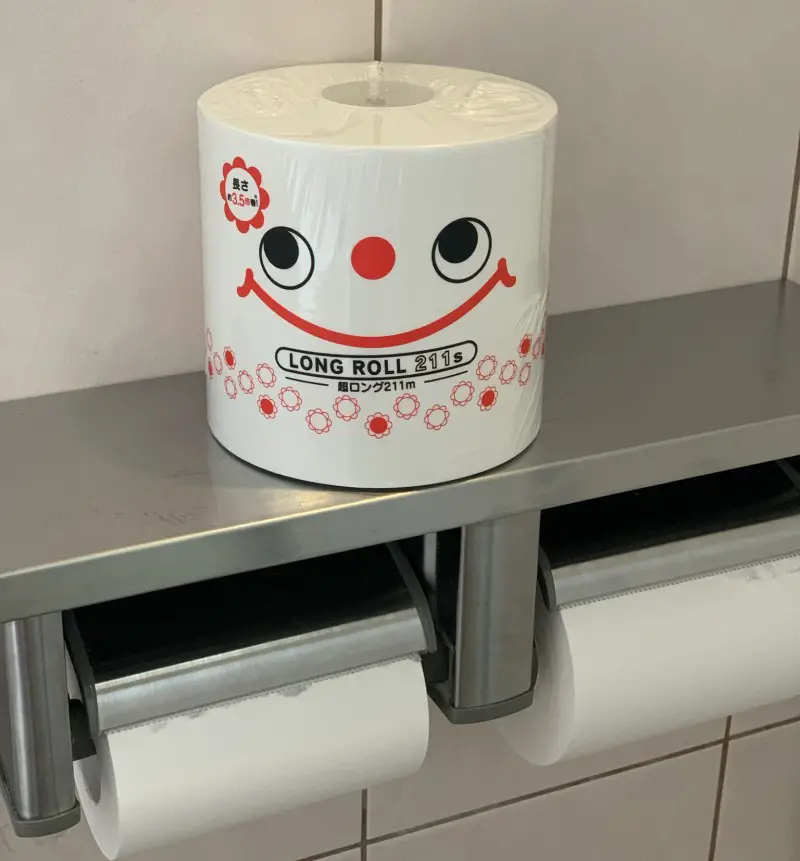
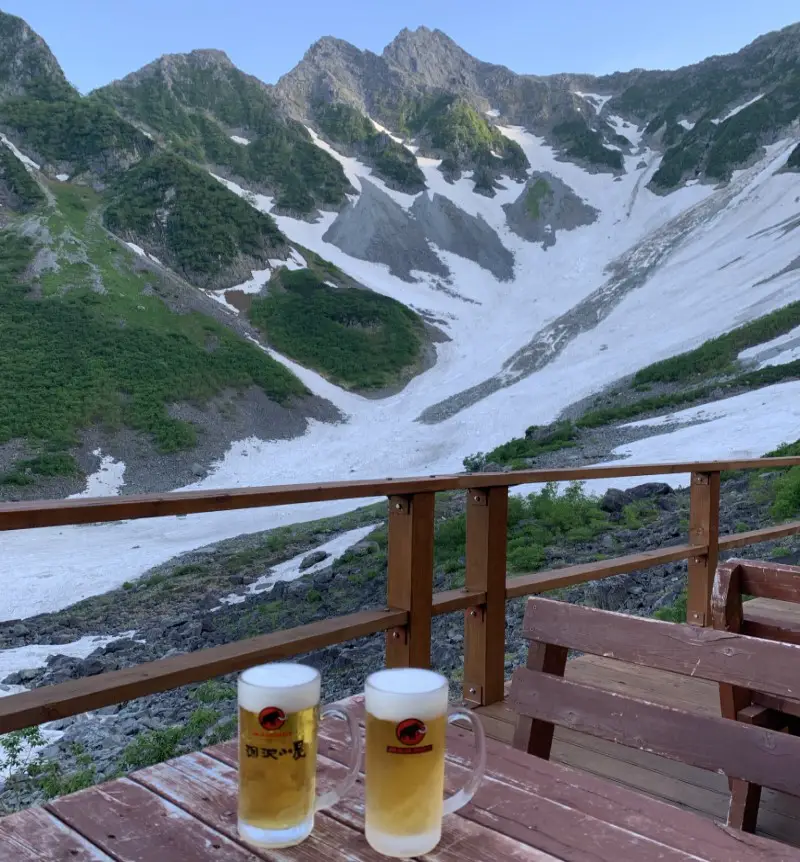
A can of beer at 2 am? Yes you can!
Japan is famous for vending machines with soft drinks located all over the country. In fact, nobody has ever seen an out of order vending machine. 🙂 But a vending machine with beers in front of the mountain hut at 3,000 m above the sea level? If you love mountains as much as you love beer, you should hike in Japan just to experience this. I had a draft beer with a perfect foam served not in a plastic cup, but in a glass mug with an epic mountaineering logo at an 2,350 m. I guess I reached not a mountain hut, but paradise. 🙂
A can of beer at 2 am? Yes you can!
Japan is famous for vending machines with soft drinks located all over the country. In fact, nobody has ever seen an out of order vending machine. 🙂 But a vending machine with beers in front of the mountain hut at 3,000 m above the sea level? If you love mountains as much as you love beer, you should hike in Japan just to experience this. I had a draft beer with a perfect foam served not in a plastic cup, but in a glass mug with an epic mountaineering logo at an 2,350 m. I guess I reached not a mountain hut, but paradise. 🙂

Ice cream
Every time I go hiking in the mountains, I feel like having an ice cream. For weeks I craved good ice cream while trekking through the snowy Himalayas. In Japan, my dream has finally come true. In Karasawa Hut at an altitude of 2,350 m I got the most delicious soft ice cream ever in the short history of ice cream in mountain huts. 🙂
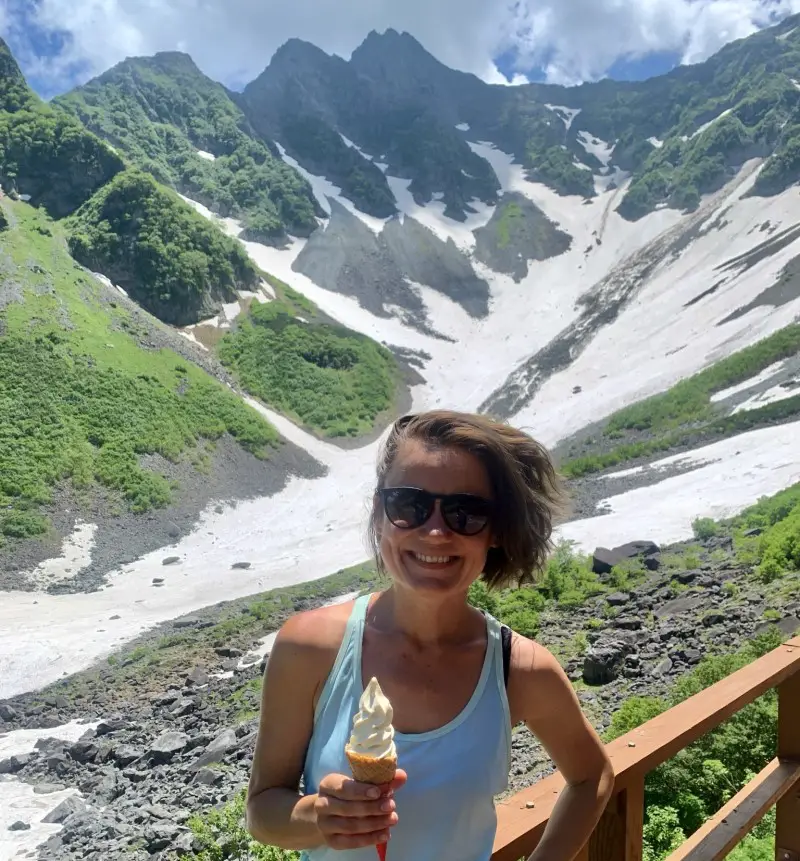
Hiking and staying in mountain huts in Japan is interesting not only because of the beautiful scenery and the abundance of mountains, but because you can also learn, or rather experience on your own skin, the uniqueness of Japanese culture. Majority of hikers in Japan behave the same way and act in a large group. They wake up at the same time, have breakfast together, and have very similar expensive mountain gear. They form an extremely well-organised and efficient “hiking machine for summiting Japanese peaks”. 🙂
I hope that my adventure with the Japanese mountains will not end here and I will be able to explore and tell you more. In short, staying at a mountain hut in Japan is both very interesting and enjoyable, so I hope you will have the opportunity to experience it for yourself.
Just don’t take this post too seriously. I don’t want you to go hiking without sandals and earplugs and blame me if you need them. The truth is, when hiking in the mountains, it’s better to be over-prepared than under-prepared. Besides, I haven’t been to all the mountain huts in Japan (not yet :)). Everything I wrote is based solely on my personal, very subjective experience in 5 mountain huts in the northern Japanese Alps (Jonen Hut, Chogatake Hutte, Karasawa Hut, Hotakadake Sanso, Yokoo Sanso).
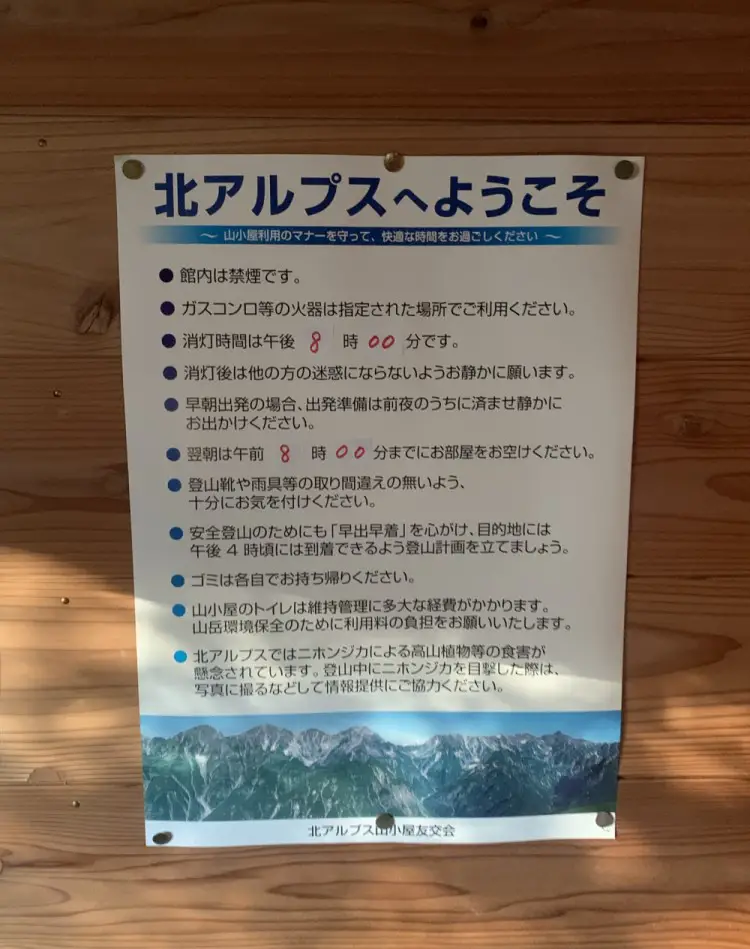
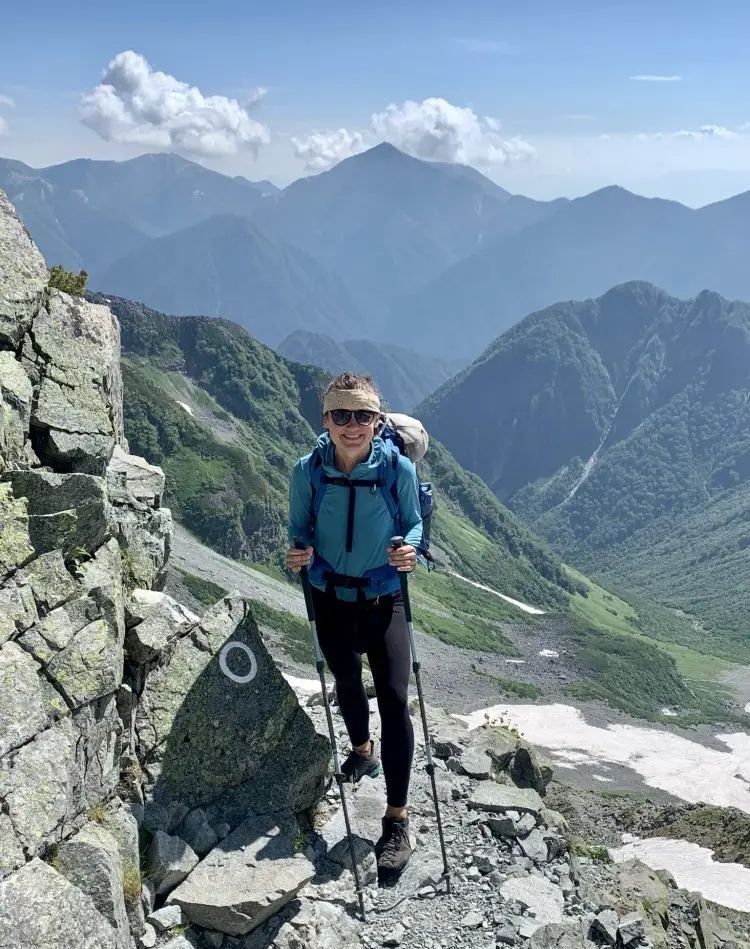

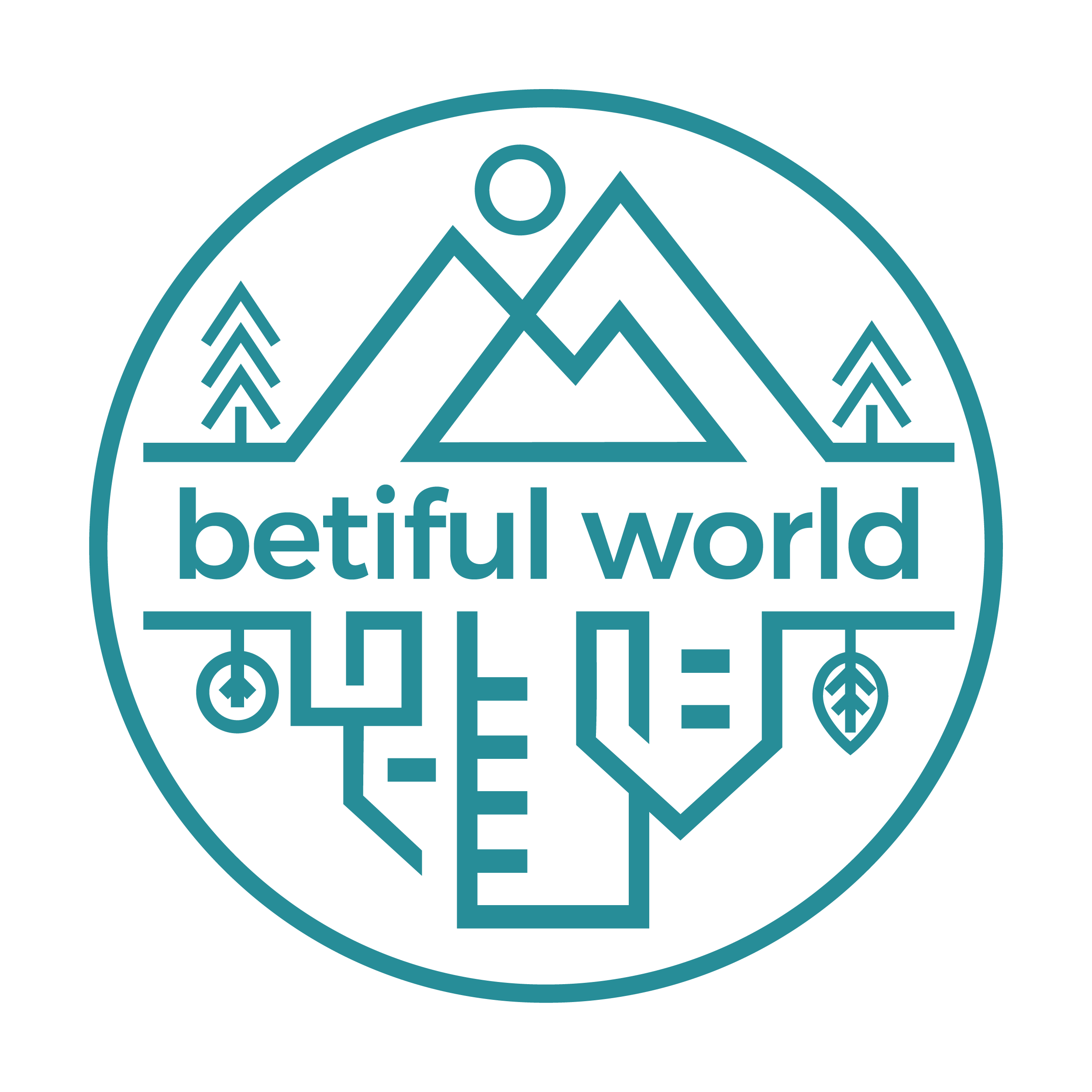
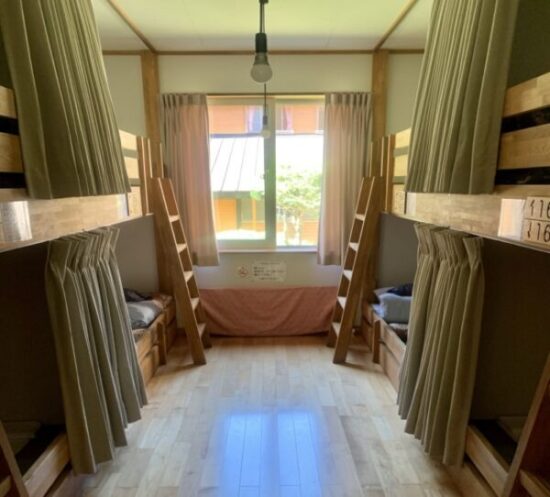
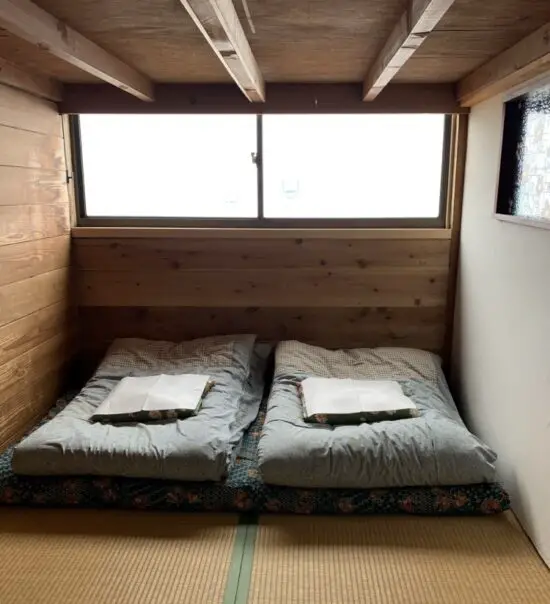

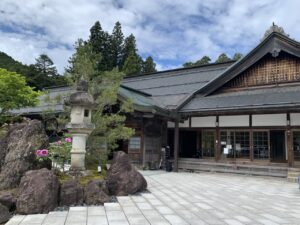
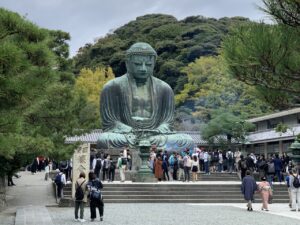
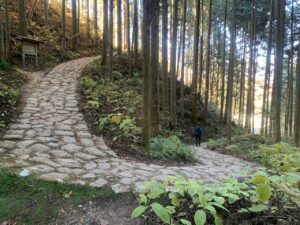
cool! thanks for sharing. More kiddy’s odwiedze 🙂
Thanks for the blog! Going to the same area at the end of July 😀
Can I ask, was there opportunity to charge electronics at the huts?
Hi Bodil and thank YOU! I don’t remember exactly where the plugs were in the huts. But there must have been some, as I hiked for a week and had my phone charge (and one small power bank) always charged. Happy hiking!